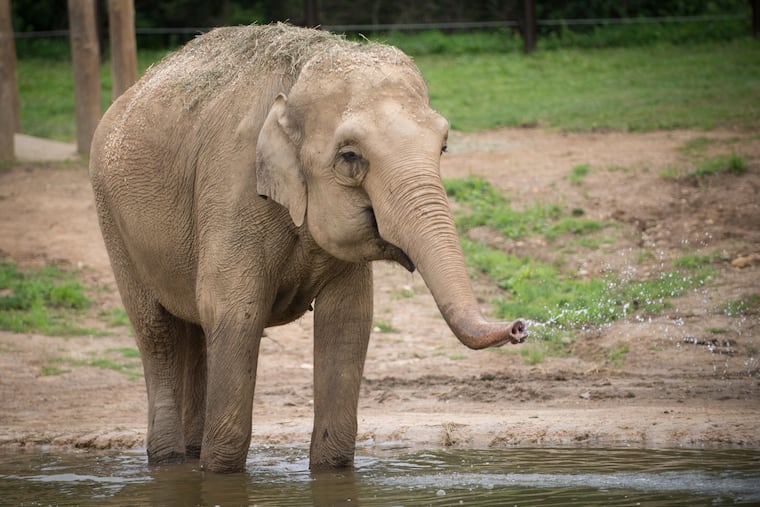Elephants ward off cancer via ‘zombie gene’
African elephants die from cancer at a third the rate of people — that's despite weighing up to a hundred times more and living well into their 70s. Trillions more long-lived cells should equal more chances for tumors, yet somehow these pachyderms are protected.

Elephants are exceptional. In addition to their prodigious proboscises, remarkable recall, and melancholic mourning, they also hardly ever get cancer.
African elephants die from cancer at a third the rate of people — that's despite weighing up to a hundred times more and living well into their 70s. Trillions more long-lived cells should equal more chances for tumors, yet somehow these pachyderms are protected.
A study published Tuesday in Cell Reports offers a clue as to why: Elephants rely on a once-dead gene that specializes in killing off wayward cells, effectively nipping their cancers in the bud.
Genes that protect against cancer are nothing new — people have them, and scientists already knew that elephants have even more.
In humans, the most studied tumor suppressor gene, TP53, is mutated in most cases of cancer. When this guardian of the genome stops working, other dangerous mutations accumulate, turning cells screwy. One way elephants protect themselves is by having extra copies of TP53 in their genome — 20 copies, to be exact.
But TP53 also does more in elephants than in humans, the new study found. In elephants, it activates a gene called LIF6 — dubbed a "zombie gene." When turned on, LIF6 causes elephant cells to self-destruct, taking any damaged DNA down with them.
This process of cellular suicide, known as apoptosis, can happen by other means in human cells. It's an "escape mechanism," said Michael Hall, interim chair of the department of clinical genetics at Fox Chase Cancer Center. Tumors thrive when they figure out ways around genetically programmed self-destruction.
When it comes to the genetics of human cancer, the LIF6 gene is "not one that's been on the radar," said Hall. But the cells of elephants and people are "remarkably similar," Hall said, so these findings may one day be extended to keep human tumors at bay.
The authors of the new study refer to LIF6 as a "zombie gene" for good reason: it rose — with bloodlust — from the elephant's genome graveyard.
LIF6 was once a pseudogene. Like a sloppily copied book report, a pseudogene is an imperfect duplicate of a regular gene that no longer functions as it used to. Many pseudogenes die, meaning they don't actually function at all, but even dead genes stick around "collecting dust," explained Hall.
In their analysis, scientists from the University of Chicago discovered several LIF-family pseudogenes in the genomes of various paenungulata (elephants, manatees, and hyraxes – cat-size furballs native to the Middle East and Africa.) Only elephants were found to contain a resurrected version of the LIF6 gene.
The authors estimate that the genetic resurrection of LIF6 happened in the elephant lineage about 59 million years ago, suggesting woolly mammoths and American mastodons may have been protected by the same genetic mechanism. This offers one possible explanation for how this branch of mammals grew so massive without being brought down by cancer.